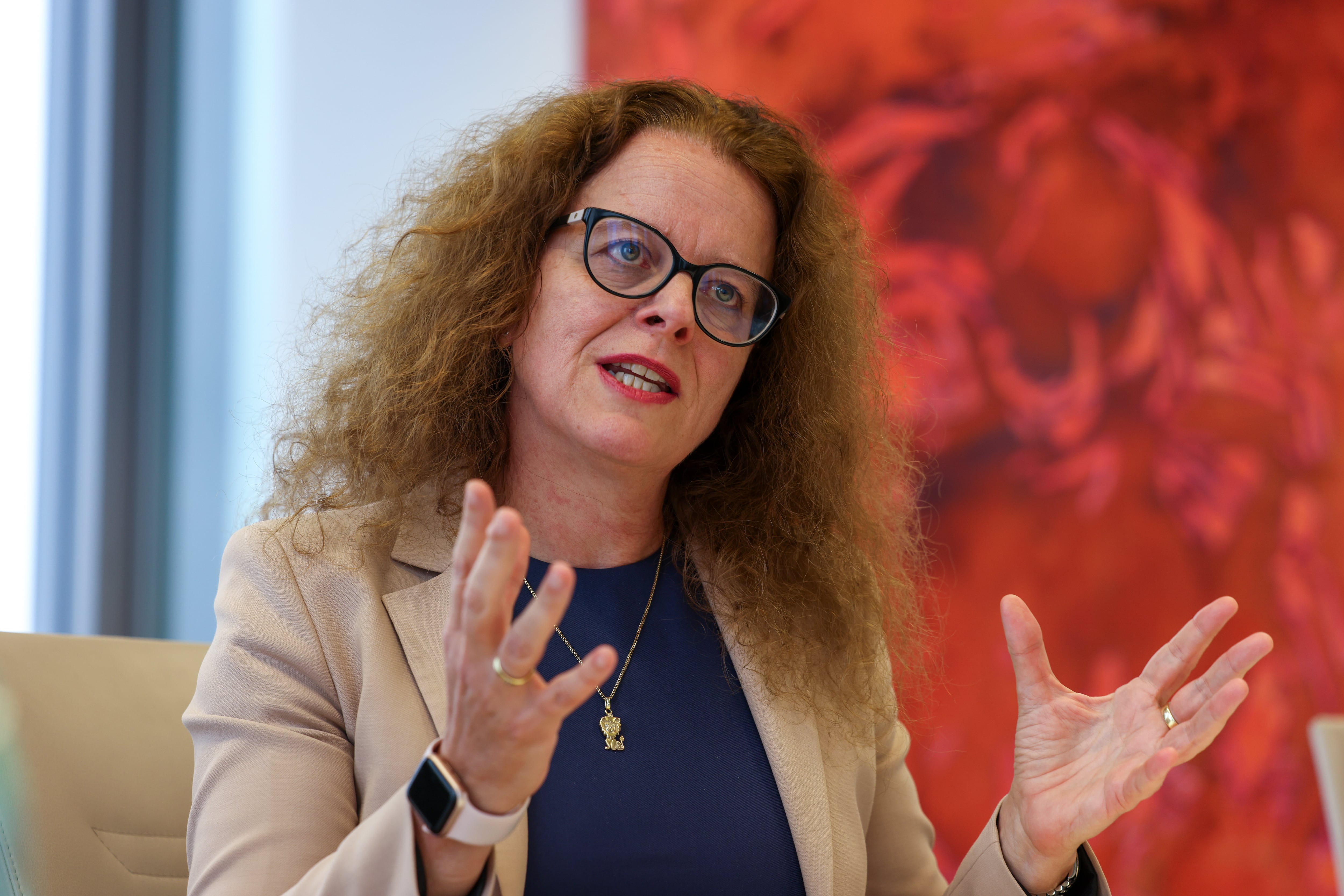The European Central Bank (ECB) kept its key deposit rate at a record high of 4 per cent on Thursday but laid a path for a cut in June.
The bank’s governing council, led by president Christine Lagarde, noted that inflation is continuing to ease, led by lower food and goods prices, even if service prices remain high.
It said that if confidence increased that inflation is converging on its 2 per cent target “in a sustained manner, it would be appropriate to reduce the current level of monetary policy restriction”. It is the clearest official signal yet from the governing council that rate cuts are likely on the way, even if many individual members, including Ms Lagarde, had previously pointed towards a potential June cut.
Ms Lagarde told a press conference that the 26-member governing council will have access to “a lot more data” and a fresh set of inflation projections from ECB staff by the time it sits down for its next monetary policy meeting on June 6th.
READ MORE
She added that “a few members” had pressed for a rate cut this month, but “agreed to rally to the consensus of a very, very large majority” to keep rates on hold.
“The ECB couldn’t have been clearer: barring any big surprises in the data, a June rate cut seems highly likely,” said Simon Wells, chief European economist with HSBC.
[ From laggard to first mover: ECB could be first big central bank to cut ratesOpens in new window ]
The ECB currently expects that euro zone inflation, which was running at 2.4 per cent last month, will reach its target by the middle of next year. Still, Ms Lagarde said “there will be bumps on the road”.
“We are not going to wait until everything goes back to 2 per cent to make the decisions that will be necessary,” she said.
The ECB hiked its deposit rate from minus 0.5 per cent to 4 per cent in the 15 months to last September as it belatedly joined other big central banks in tightening lending conditions in a fight against inflation.
Investors in short-term debt markets – or money markets – are currently pricing in an ECB cut for June and currently betting that the deposit rate will fall by 0.77 of a percentage point by the end of 2024, equating to slightly more than three quarter-point cuts.
“We think the ECB can continue to prepare the market for a rate cut at its June meeting,” said Des Lawrence, a senior investment strategist with State Street Global Advisors in Dublin. “Barring any significant surprises on the incoming wage and inflation data we believe it can probably deliver about 100 basis points (1 percentage point) of policy cuts this year.”
The ECB’s main lending rate, the benchmark against which about 180,000 Irish tracker mortgages are priced, currently stands at 4.5 per cent.
[ The Irish Times view on the ECB meeting: time to prepare to cut interest ratesOpens in new window ]
However, the Frankfurt-based institution plans to reduce the margin on its lending rate from 0.5 of a point over the deposit rate to 0.15 of a point in September, as a result of a recent rethink on the gap between both rates.
This will effectively result in an added reduction of 0.35 of a point for tracker borrowers, independent of any rate-cut decisions taken in the meantime by the governing council.

The auto-enrolment pension scheme seems good on paper, but how will it actually work?
Euro-zone headline inflation fell to an annual rate of 2.4 per cent in March from 2.6 per cent in February and a peak of 10.6 per cent in late 2022, according to Eurostat, the EU’s statistics agency.
Food price inflation dropped to 2.7 per cent from 3.9 per cent on the month, while goods price growth eased to 1.1 per cent and energy prices dropped 1.8 per cent. Still, service price inflation remained high, at 4 per cent.
The ECB’s latest meeting came a day after it emerged that US consumer prices increased more than expected in March, leading financial markets to anticipate that the Federal Reserve would delay cutting interest rates until September. Inflation climbed to an annual rate of 3.5 per cent from 3.2 per cent in February.
Ms Lagarde said that the ECB will take inflation developments across other large economies into account in its future assessments, but not base any monetary policy decisions on what other big central banks, like the Fed, do. “We are data dependent. We are not Fed dependent,” she said.
















